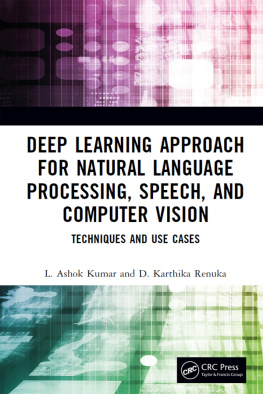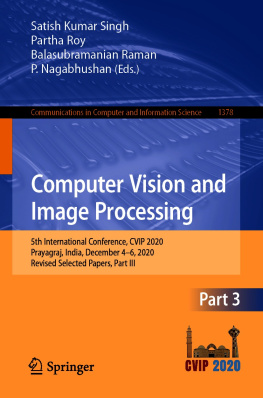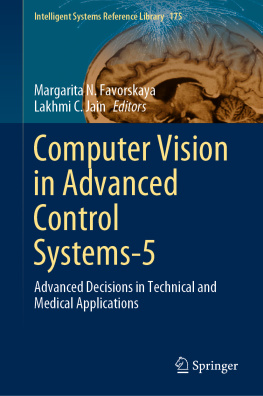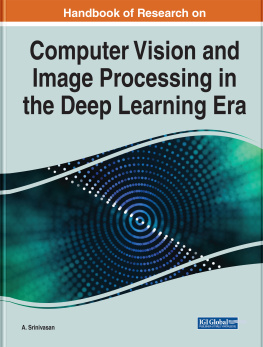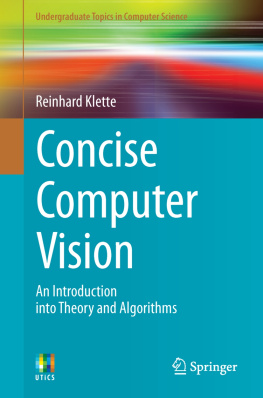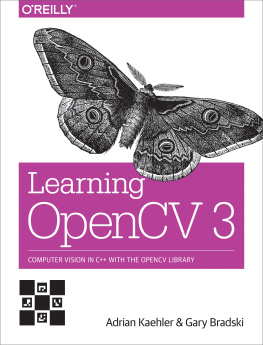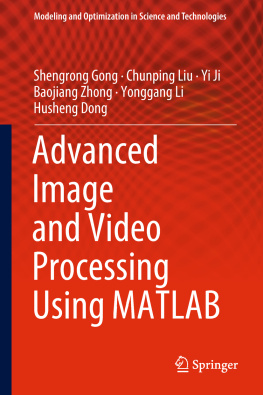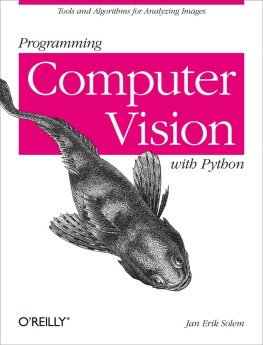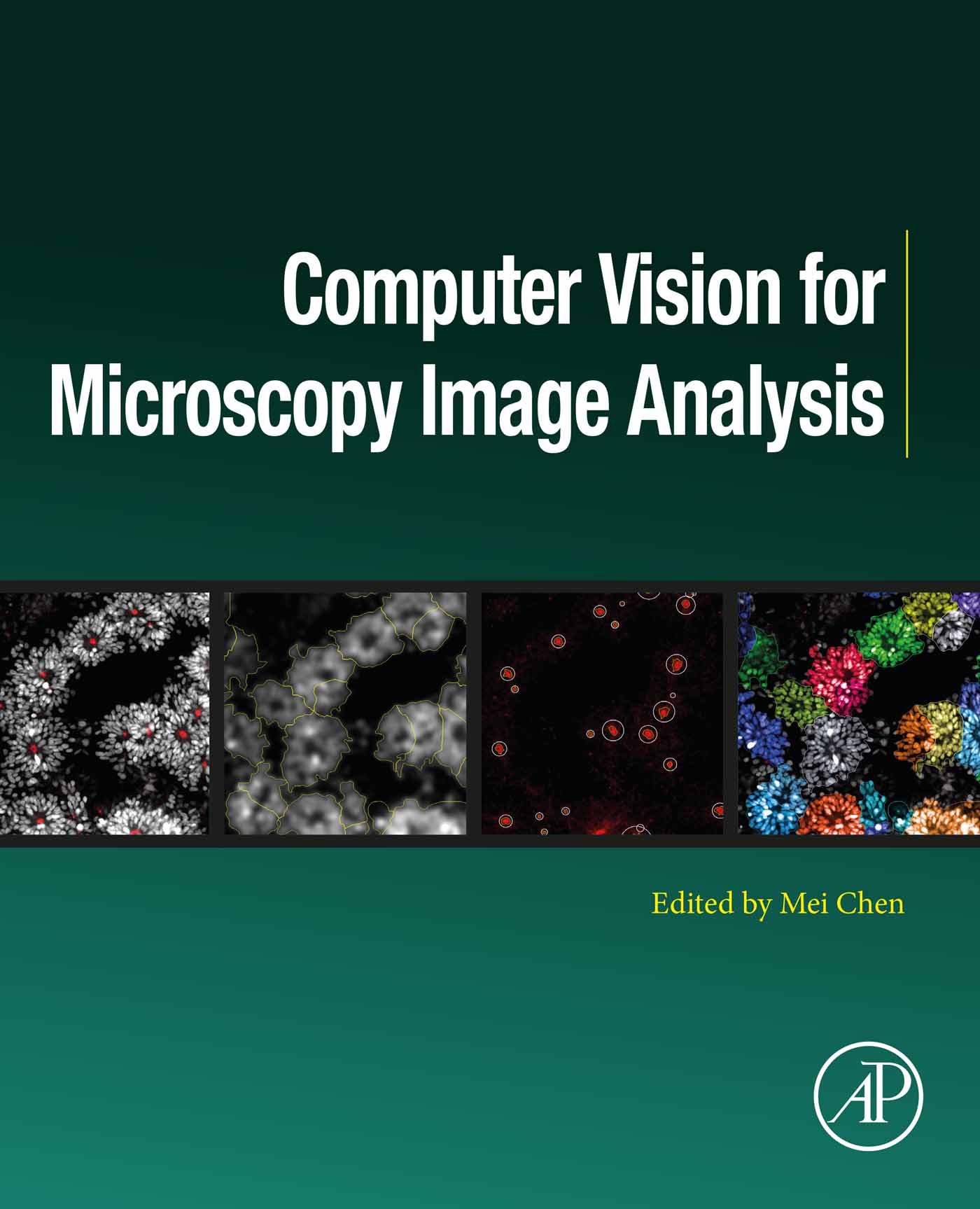Computer Vision for Microscopy Image Analysis
First Edition
Mei Chen
Principal Research Manager, Microsoft, Redmond, Washington, USA

Copyright
Academic Press is an imprint of Elsevier
125 London Wall, London EC2Y 5AS, United Kingdom
525 B Street, Suite 1650, San Diego, CA 92101, United States
50 Hampshire Street, 5th Floor, Cambridge, MA 02139, United States
The Boulevard, Langford Lane, Kidlington, Oxford OX5 1GB, United Kingdom
2021 Elsevier Inc. All rights reserved.
No part of this publication may be reproduced or transmitted in any form or by any means, electronic or mechanical, including photocopying, recording, or any information storage and retrieval system, without permission in writing from the publisher. Details on how to seek permission, further information about the Publishers permissions policies and our arrangements with organizations such as the Copyright Clearance Center and the Copyright Licensing Agency, can be found at our website: www.elsevier.com/permissions.
This book and the individual contributions contained in it are protected under copyright by the Publisher (other than as may be noted herein).
Notices
Knowledge and best practice in this field are constantly changing. As new research and experience broaden our understanding, changes in research methods, professional practices, or medical treatment may become necessary.
Practitioners and researchers must always rely on their own experience and knowledge in evaluating and using any information, methods, compounds, or experiments described herein. In using such information or methods they should be mindful of their own safety and the safety of others, including parties for whom they have a professional responsibility.
To the fullest extent of the law, neither the Publisher nor the authors, contributors, or editors, assume any liability for any injury and/or damage to persons or property as a matter of products liability, negligence or otherwise, or from any use or operation of any methods, products, instructions, or ideas contained in the material herein.
Library of Congress Cataloging-in-Publication Data
A catalog record for this book is available from the Library of Congress
British Library Cataloguing-in-Publication Data
A catalogue record for this book is available from the British Library
ISBN 978-0-12-814972-0
For information on all Academic Press publications visit our website at https://www.elsevier.com/books-and-journals
Publisher: Mara Conner
Acquisitions Editor: Tim Pitts
Editorial Project Manager: John Leonard
Production Project Manager: Kamesh Ramajogi
Cover Designer: Mark Rogers
Typeset by SPi Global, India

Contributors
Peter Bajcsy Information Technology Laboratory, National Institute of Standards and Technology, Gaithersburg, MD, United States
Mary Brady Information Technology Laboratory, National Institute of Standards and Technology, Gaithersburg, MD, United States
Weidong Cai The University of Sydney, School of Computer Science, Darlington, NSW, Australia
Joe Chalfoun Information Technology Laboratory, National Institute of Standards and Technology, Gaithersburg, MD, United States
Mei Chen Microsoft, Redmond, WA, United States
Subhajyoti De Rutgers Cancer Institute of New Jersey, New Brunswick, NJ, United States
Daniel J. Hoeppner Astellas Research Institute of America, La Jolla Laboratory, San Diego, CA, United States
Qiaoying Huang Rutgers University, Department of Computer Science, Piscataway, NJ, United States
Marcin Kociolek Lodz University of Technology, Lodz, Poland
An-An Liu Tianjin University, School of Electrical and Information Engineering, Tianjin, China
Yao Lu Tianjin University, School of Electrical and Information Engineering, Tianjin, China
Dimitris Metaxas Rutgers University, Department of Computer Science, Piscataway, NJ, United States
Hui Qu Rutgers University, Department of Computer Science, Piscataway, NJ, United States
Nisha Ramesh University of Utah, Scientific Computing and Imaging Institute, Salt Lake City, UT, United States
Gregory Riedlinger Rutgers Cancer Institute of New Jersey, New Brunswick, NJ, United States
Mylene Simon Information Technology Laboratory, National Institute of Standards and Technology, Gaithersburg, MD, United States
Yang Song University of New South Wales, School of Computer Science and Engineering, Kensington, NSW, Australia
Hang Su Tsinghua University, Department of Computer Science and Technology, Beijing, People's Republic of China
Yu-Ting Su Tianjin University, School of Electrical and Information Engineering, Tianjin, China
Tolga Tasdizen University of Utah, Scientific Computing and Imaging Institute, Salt Lake City, UT, United States
Pengxiang Wu Rutgers University, Department of Computer Science, Piscataway, NJ, United States
Jingru Yi Rutgers University, Department of Computer Science, Piscataway, NJ, United States
Zhaozheng Yin Stony Brook University, Department of Biomedical Informatics and Department of Computer Science, Stony Brook, NY, United States
Preface
Mei Chen, Microsoft, Redmond, WA, United States
Advances in imaging technologies have enabled the acquisition of large volumes of microscopy images and made it possible to conduct large-scale, image-based experiments for biomedical discovery. Computer vision has huge potential in automating the analysis and understanding of such large data. In 2013, professors Takeo Kanade, Phil Campbell, Lee Weiss, and I cochaired the First International Workshop on Cell Tracking, hosted at Carnegie Mellon Universitys Robotics Institute. It was a 1.5 day by-invitation workshop that drew overwhelmingly positive feedback from the more than 50 attendees across academia, government, and industry. Encouraged by this success, in 2016 I chaired the First IEEE Workshop on Computer Vision for Microcopy Image Analysis (CVMI), held in conjunction with the high-impact IEEE Conference on Computer Vision and Pattern Recognition (CVPR). It was an immediate success despite being on the last afternoon of the last day of a 6-day conference. Since then, I have been able to grow CVMI into a full-day workshop at CVPR every year with sustained attendance of more than 120 participants.
It has taken a few years for all the contributors to accomplish this book project after Elsevier expressed interest at CVMI 2017, and I am proud to announce that it is both comprehensive in terms of the scope and easy to read in terms of the organization and writing. Since computer vision for microscopy image analysis is an interdisciplinary topic, we start the book with a chapter by Dr. Daniel Hoeppner presenting A Biologists Perspective on Computer Vision , where he articulates the need for biologists and computer vision experts to collaborate to overcome the limits of human visual perception and enable quantitative, high-content analysis of phenotypic traits. The remaining chapters cover state-of-the-art techniques for researchers to tackle specific problems, with in-depth analysis of the pros and cons. The ordering of the chapters follows the flow of processing and analysis of microcopy images: from Image Formation, Restoration, and Segmentation by Drs. Zhaozheng Yin and Hang Su; to Detection and Segmentation by Dr. Tolga Tasdizen and team; then Image Classification by Drs. Yang Song and Weidong Cai; onto microscopy image sequence processing and analysis with Cell Tracking by me and Mitosis Detection by Dr. An-An Liu and team. The book concludes with Numerical Evaluations by Dr. Peter Bajcsy and team and an Application to Imaging Genomics by Dr. Dimitris Metaxas and team. Not included are traditional approaches (or the innumerable modifications of them) because they have been well covered in the literature.


